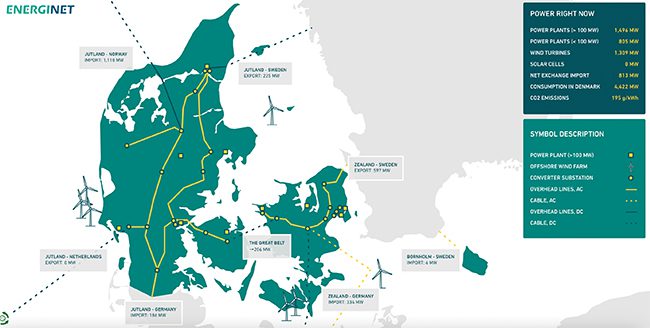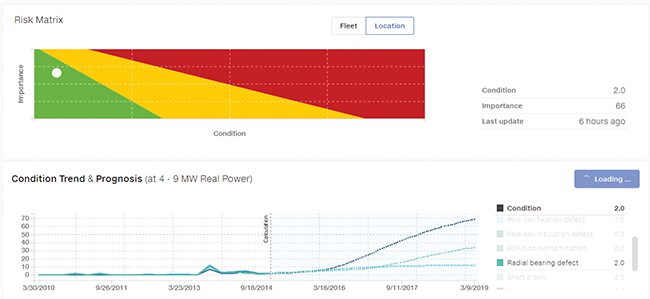APM: Making It Easy to Maintain a Greener Grid
The Inflation Reduction Act gave the power generation industry the push it needed to go all in on renewable energy. In the short term, we’ll see more solar and onshore wind. In the long term, we’ll have green hydrogen.
It all adds up to needing more assets: more generation assets, more transmission and distribution assets, and more people managing it all. Pairing this with supply chain shortages, maintaining the green grid, and doing so in an eco-conscious manner will be difficult. But by leveraging artificial intelligence (AI)-enabled asset management with a robust Internet of Things (IoT) network, utilities and other power generators should be able to meet the challenges of the energy transition while maintaining grid reliability.
A prime example? Denmark’s national transmission system operator Energinet is all in on this approach. Here’s a closer look at the challenges facing asset management and how Energinet is rising to the occasion in a greener way.
The New Challenges of Asset Management
The asset management challenges facing power companies have both shifted dramatically, and in some cases not at all. These companies still need to figure out when an asset needs maintenance, when it might fail, and when it’s time to start adding new equipment.
Now these companies also need to worry about the ongoing supply chain challenges. It requires predicting asset needs further out so that the department can order new parts before they’re needed, or even to start building and installing assets months ahead of the original timeline.
The assets themselves are changing, too. The industry needs to manage and oversee more aging assets as well as new or unfamiliar assets. Especially for the latter, the old ways of asset management, and even institutionalized knowledge, aren’t as effective or helpful.
Add to that customers’ skyrocketing demands and expectations. While customers have always been attuned to power outages, the electrification of everything—as well as remote work—have made their focus on electricity even more acute. These industry changes have also impacted times of peak demand, which means companies need to manage their assets differently.
And if that’s not enough change in a couple of years, there also are calls for reducing carbon emissions alongside more frequent extreme weather events. Not only does this mean power companies are often spending more time repairing or protecting assets, they also are looking for ways to reduce their carbon emissions.
How Denmark Will Go Greener
With asset management problems piling up left and right, Energinet—Denmark’s national transmission system operator (Figure 1)—decided it needed to take a critical look at its current asset performance management and reevaluate its plans. It selected Hitachi Energy’s Lumada Asset Performance Management to help secure a greener grid, and support the integration of renewables and electrification, as well as meet these other new challenges.
 |
|
1. Energinet’s power network has connections with several countries. The company, Denmark’s national transmission system operator, is utilizing an asset performance management system to optimize equipment across its vast territory. Courtesy: Energinet |
Energinet had three key objectives in mind for the project: making more effective decisions, limiting customer outages, and reaching its sustainability goals. By revamping its asset management system, Energinet identified the keys for its new asset management technology to complete these objectives.
Use Data-Driven Insights to Support Business Decisions. Energinet needed to be able to identify risks and prioritize actions for its assets. With insights based on data (Figure 2), it could better assess grid reinvestments needed to achieve its 2030 carbon neutrality goals.
 |
|
2. Energinet is using data and digital tools to identify risks and prioritize operations and maintenance for assets across its system. Courtesy: Hitachi Energy |
Integrate Large Variable Renewable Energy While Also Maintaining a Highly Reliable and Secure Electrical Power Grid. For instance, Energinet decided to extend its Revsing substation with Hitachi Energy’s EconiQ gas-insulated lines. This will keep the company from adding more than 2,000 kilograms of sulfur hexafluoride into the Danish transmission network. It also will enable the company to increase renewables integration. As EconiQ is a new technology, it required an asset management system that could accommodate it and predict Revsing’s new needs.
Digitize Assets a Half-Century Old to Move Beyond Time-Based Maintenance. Energinet isn’t alone in that it has assets marching toward the 50-year mark. It is installing sensors on transformers, circuit breakers, and disconnectors to bring these assets into the modern age and extend their lifecycle. With new visualizations and analytics, Energinet’s operators can more quickly and clearly calculate risks and asset maintenance needs, minimizing time and energy spent on time-based maintenance.
The Internal Infrastructure Needed
The technology Energinet used is a key part of its successful asset management plan. However, simply having the technology in place isn’t enough to see success with asset performance management. It’s important to also put the right company infrastructure in place to support it, including in these three key ways:
■ Secure Employee Buy-In from Asset Monitoring or Renewal Departments and Set Up the Right Training for the Technology. Digital transformation like this can be a big change, and change is never easy.
■ Take the Time to Establish Trust in the Technology and in Its Predictive Abilities. For years, the industry has run its assets through time-based maintenance or institutional knowledge. While early asset management technology might have turned some people off, it’s vastly improved in the last few years, even more so over the last decade.
■ Incorporate Asset Management into Your Long-Term Business Plans. Often asset management can start and stop with the asset team even though the technology can help support business decisions, identify risks, and prioritize actions.
With the asset challenges mounting left and right, power companies need to take a hard look at their current programs and see what they can do differently. Energinet decided to lean into technology that provided data-driven insights, helped keep its grid stable, and digitized its aging but critical assets. With the right internal setup, other companies can take advantage of new technologies as well, and meet the moment of electrification and a greener, cleaner grid.
—Bryan Friehauf is senior vice president of Enterprise Software Solutions at Hitachi Energy.